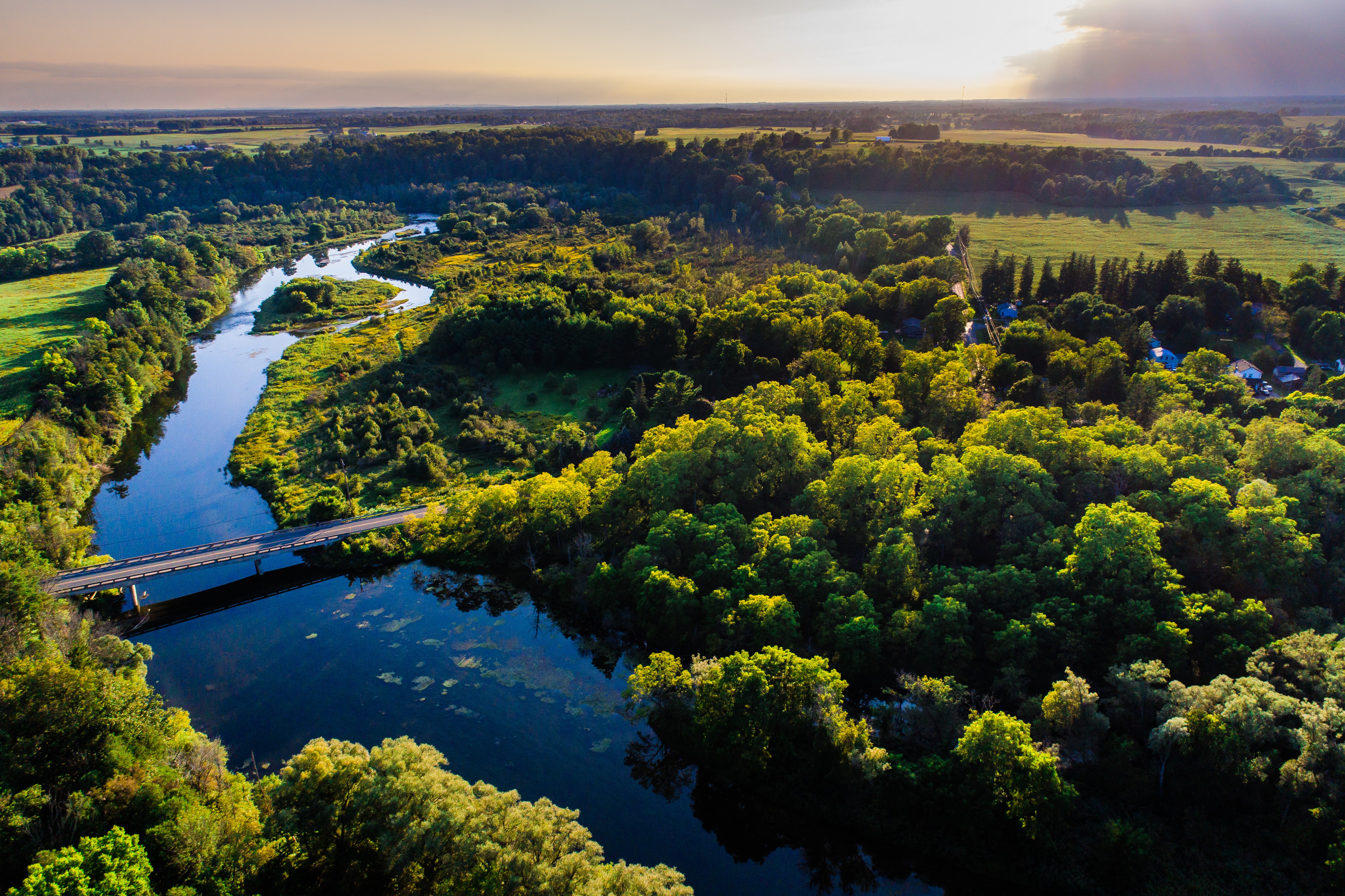OSA Nominee profile: Chris Lee and Family
How an ugly farm became a natural oasis
When Chris Lee and his wife Sonya bought a farm on Oxford County’s picturesque Old Stage Road, there was a lot to be desired.
Lee was quick to admit that, “It was a very ugly farm.”
The 50-acre property on the one side of the road was a mess of dead trees, flooded fields and a large portion of swampy land that was not farmable. Not only were the esthetics bad, but the design of the land was not environmentally friendly or conducive to proper drainage.
“We needed to do something with it, so we tiled the field and dug a pond,” says Lee.
They planted trees and other plants around the pond to create a natural-looking wetland. Spoil piles, excavated materials consisting of topsoil or subsoils removed during construction, and were blended with natural typography to support regeneration.
This was the first of many improvements to the property, which included another 150 acres on the other side of the road waiting for some tender, loving care.
Over the past 15 years, the Lee’s have transformed their farm into a natural oasis with multiple wetlands and woodland areas where unique tree species grow and wildlife thrive. Now, all drainage from the surrounding farmland goes through the marsh to help filter out nitrates before reaching the municipal drain system.
Each year the family plants around 50 native trees somewhere on their two adjacent properties, but the most recent project was another wetland restoration with Ducks Unlimited.
“It’s very important now for farmers to be stewards of the land, and for me, personally, trees are so important. But I really did this for my son Jack,” says Lee. “He loves the outdoors and has been a big part of this.”
He added that his son can name every species of duck and has spent a lot of time researching how to attract ducks and other wildlife to their wetlands. They have installed duck and bird boxes around the pond and Jack’s efforts seem to be paying off as Lee says they are seeing a lot more waterfowl visit the area.
But it’s the little things too, Lee adds – like planting a pumpkin patch and clover for the deer to eat, cutting a buffer strip of grass along the creek to prevent erosion and preserving a wide wildlife corridor along the water in the open fields.
“It’s not a lot of work and we enjoy it… it’s why we do it.”














